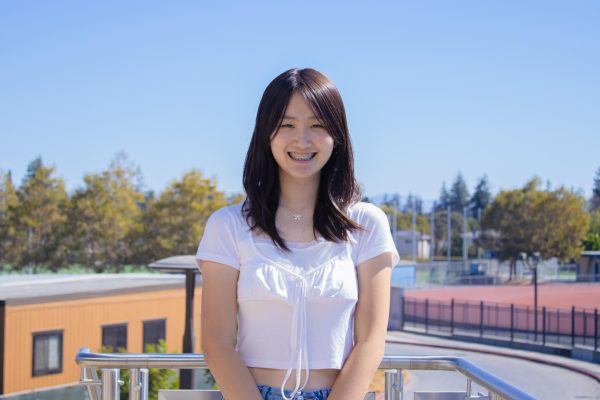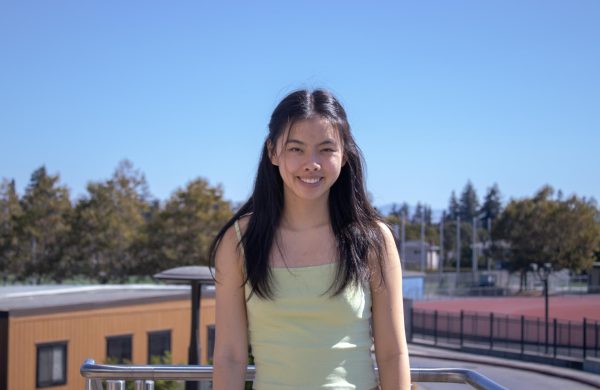Bilingual or bye-lingual

May 8, 2023
As multilingualism and cross-cultural communication continues to shape the world, the ability to speak more than one language has become an increasingly valuable asset. While some individuals grow up in a multilingual environment, others decide to begin learning at a later age. Due to the advent of technology and accessibility of learning resources like Lynbrook’s four language classes and online resources like Duolingo, it has become relatively easy to get started learning a new language. Unfortunately, those who learn at an older age have an inevitable disadvantage. As children tend to unconsciously integrate words into their lives, adults and teenagers translate what they learn into the language they already know. Nonetheless, the benefits of learning a new language are numerous, ranging from improved cognitive function to enhanced cultural understanding and global communication. As such, the pursuit of linguistic mastery remains a worthwhile endeavor, regardless of an individual’s age or background. Lynbrook students and teachers alike have embraced the process and benefits of learning a new language.
Spanish
Paula Begonia:
Sophomore Paula Begonia immigrated from Venezuela with her family to California in 2021. As a native Spanish speaker of 16 years, she faces her own set of challenges when fusing two languages into her day-to-day life. While she converses in Spanish with her family and her Hispanic friends, she speaks English at school.
“It was hard to feel like I was a part of something because there’s not a lot of Hispanic people here at school, and the language barrier made it hard to communicate,” Begonia said. “When I’m talking to someone who doesn’t speak Spanish, I feel like I’m translating a word that I know the meaning of but just can’t find the written word. Sometimes when I speak, people make negative comments about my pronunciation. It’s sad because they usually don’t know about all the effort others are putting in.”
On top of ELD, Begonia currently takes AP Spanish at Lynbrook. Despite being a fluent speaker, the school curriculum does not align with what she is accustomed to and finds difficulty in grasping the unfamiliar set of rules.
“The way others learned English is different from the way I learned it,” Begonia said. “The methods they use to teach Spanish and all of the rules are really different for a native speaker.”
With the nature of bilingualism, she often experiences changes in personality and body language when she switches between Spanish and English, known as code-switching. At times, she struggles to navigate her own identity when trying to adapt to communicating with different people.
“When I’m with my family, I integrate Spanglish words, and they don’t know what’s going on,” Begonia said.
Maestra Morelos:
It was at her church where Spanish teacher Julia Morelos first heard a group of kids speaking Spanish. It was also at that moment that she discovered her passion for the language. Soon after that, Morelos begged her mother for the Spanish version of different games such as Monopoly and Scrabble, but her official Spanish journey only began in the Spanish 1 classroom as a freshman at Lynbrook.
“My first two years of learning Spanish at Lynbrook were amazing because of my teacher,” Morelos said. “Just like me, she wasn’t a native speaker, but she was so inspiring and I learned a lot from her.”
Despite studying Spanish for eight years throughout high school and college, her experiences traveling to Spanish-speaking countries like Mexico and Ecuador ultimately catapulted her improvement.
“I remember being very nervous to actually speak Spanish for many years, and visiting and working in Spanish speaking countries really helped me get over this fear,” Morelos said. “In those places, it wasn’t an option to speak in English, so I was able to push myself towards true fluency. To help my students get over this hurdle, I try to incorporate more speaking opportunities such as daily partner chats, interviews, and role plays.”
At 24, Morelos met her Mexican partner’s family, who taught her much of what she has learned about Latin American culture. After the birth of her son, the family changed their “at home” language to Spanish, which has deepened Morelos’ connection to the language, helping her rapidly improve.
“My son is a part of a Spanish dual immersion program where kids acquire two languages starting in kindergarten. Within their first year, the majority are fully comprehending and communicating in Spanish, despite the fact that half of them don’t come from Spanish-speaking households.” Morelos said. “It’s such a beautiful and painless experience for kids to acquire a second language this way. The language learning centers of their brains at that age are ready to soak in the new language.”
Today, Morelos teaches three Spanish 1 and two Spanish 2 classes at Lynbrook. She hopes to assist and guide her students in their Spanish journey as she has been in their shoes before.
“My advice for students learning a new language at a later age is to try not to be self-conscious.” Morelos said. “You’ve got to throw your pride to the side. As a teacher, I try to create an atmosphere in my class where mistakes are expected, respected, and then corrected. The goal is always communication, not perfection.”
French
Vachan Arora:
Senior Vachan Arora is currently an AP French student at Lynbrook. He started learning French in 8th grade and believed it to be fairly easy until it started to get tedious starting sophomore year in French 3. Due to remote learning during COVID-19, the transition was especially hard as he wasn’t physically immersed in a French-speaking environment, creating complications while he attempted to learn more about the language.
However, Arora remained immersed in French culture by regularly listening to famous French singers, like Angèle and Keen’V. He also participated in activities such as “Manie Musicale,” a weekly exercise in which he listened to songs from two French singers and analyzed and explained the lyrics of his preferred singer, allowing him to expand his French vocabulary and gain a deeper connection to the culture.
Throughout his experiences in high school and middle school, he has also observed the overlapping terminology between both languages, and aims to incorporate his understanding of English into his study of French.
“A lot of English words are stolen from French so it’s cool knowing the roots of certain words,” Arora said. “It took me a long time to grasp the accent and pronunciation both in speaking and listening but all it took was more practice in class.”
Despite all the learning curves that come with starting a new language, Arora has proven to excel in French, winning a gold on the Grand Concours competition in his junior year, silver in his senior year and claiming victory during a national-level French poetry competition.
Denise Schang:
For native French speaker and teacher Denise Schang, learning a language goes beyond putting words and grammar together. Rather than focusing on accuracy, she aims to cultivate a deeper understanding of French among her students.
“I always try to tell my students not to stress over pronunciation or making mistakes, because at the end of the day, what’s most important is for one to understand the culture,” Schang said. “What’s so great about learning a new language is that you develop a different way of thinking by challenging your own thoughts and broadening your perspective.”
In her class, students have the opportunity to learn about French history and culture.
“We learn about famous people, songs, and traditions that are considered common knowledge in France so students can better interact with them,” Schang said. “It’s really different from when I was a kid because I never learned some of this information in school.”
Aside from French, Schang also studied Latin and Spanish in school, which has further helped her recognize the importance of learning multiple languages.
“In Europe, it is mandatory to learn multiple languages,” Schang said. “Fortunately, Spanish was easy to learn due to how close it is to French. They are both based on Latin, and have many similar concepts that do not exist in English.”
Since English isn’t her first language, Schang sometimes struggles with pronouncing certain words and phrases. Rather than viewing this as a setback, she sees it as an opportunity to learn and improve.
“I do hope that people never judge each other for having an accent when speaking a language,” Schang said. “Instead of limiting another person to just their accent, it’s important to recognize this person is bilingual and is being exposed to two cultures as there is so much to learn from each other.”
Chinese
Riley Dowdell:
Until 2015, sophomore Riley Dowdell attended an international school in Shanghai before moving to California. At this school, he spoke English with the rest of the international students, who all came from different countries all over the world. Within eight years, he picked up parts of the Chinese language by taking classes everyday at school. In California, he kept taking Chinese classes every weekend, but stopped in his freshman year. Over time, Dowdell has lost most of his Chinese skills because of the lack of opportunity to speak it.
“I can have a conversation with someone, but I can’t just be dropped in China and start talking,” Dowdell said, “I’ve forgotten most of it since I’m not speaking everyday.”
Despite forgetting much of the Chinese language, he remembers distinctly the customs and cultures that were exhibited in his International school.
“We had uniforms so it was a cultural shock for me when I went to the states,” Dowdell said. Their cafeteria food was definitely much better in China because it was actually prepared and made in class. Classes were a lot stricter and I always carried books around. It was kind of fun.”
Jasmine Chen:
Growing up in Taiwan, Chinese teacher Jasmine Chen is fluent in both Mandarin Chinese and the Taiwanese dialect. As a child, her experiences in school were vastly different from the class she teaches today.
“Education in Asia is very competitive, and we don’t really learn anything for practicality but rather for the college entrance exam,” Chen said. “As a result, we ended up memorizing a lot of information that we didn’t need to use later on.”
When she got to college, Chen majored in Japanese, making her fluent in all three languages.
“Learning Japanese is really easy for Chinese people because of how similar it is,” Chen said. “Many Japanese characters come from Chinese ones, and the pronunciation of certain words sound a lot alike.”
The Chinese classes that Chen currently teaches at Lynbrook are filled with interactive activities that foster a deeper appreciation and emphasis on understanding the language.
“The goal of learning Chinese is not only to know the language itself, but also allow them to interact with other people through it,” Chen said. “We also focus a lot on Chinese culture through events such as inviting a Kung Fu master, making rice cakes, and more.”
Since she teaches in the Bay Area, most of Chen’s students are native Chinese speakers just like her. As opposed to teaching non-native speakers, her students start with higher proficiency and all come from similar backgrounds.
“I believe it’s a great accomplishment to work with my students so that they can carry on their culture in the future,” Chen said. “Teaching is a wonderful job I really enjoy, and I feel so grateful to be able to achieve this wonderful honor.
Japanese
Rio Mashimo:
Senior Rio Mashimo was born in Japan, but immigrated to Australia when she was two years old and later to California at the age of four. Although her early years were filled with faint memories of living close to the ocean and being around her family, she subconsciously became fluent in Japanese before moving to America. Mishimo speaks Japanese to her parents and family in Japan, and English to her little sister and friends at school.
Through mixing Japanese with English in her daily life, she adapts well to the diversity of Bay Area culture.
“When you live in this area, being able to understand what people are saying besides in English is very helpful,” Mashimo said.
Although she takes pride in being Japanese, the constant evolution of Japanese culture causes a strain for her to connect with her culture. Due to the strictness of Japanese custom, she feels that she fits in better with the flexibility promoted in California.
“There’s a lot of peer pressure in Japan. The intensity of people judging what you wear and what you look like is on a different level,” Mashimo said. “They care about what your school is, who your family is and the only thing you can do is to try not to interact.”
Mashimo’s advice to students who are currently studying Japanese is to grasp the grammatical structure as well as the cultural aspects of the language.
“Learn grammar first, and then watch anime a lot to learn about the culture,” Mashimo said.
Jeremy Kitchen:
When Jeremy Kitchen was in high school, he was enthusiastic to leave his hometown and travel somewhere new and exciting. Due to the influences from his Korean friend, he decided on South Korea as his destination. After finding out the option was unavailable, Kitchen found himself in Japan, which opened up a new chapter in his life.
“I was told that there was a summer program to go to either Taiwan or Japan,” Kitchen said. “I didn’t really have a preference, but I remember my history teacher saying many Japanese people learn English, so I chose to go to Japan. Then I spent the summer after my sophomore year of high school in a rural Japanese town where nobody spoke any English. I decided that I really wanted to learn the language, and here I am now.”
Since his high school did not offer Japanese at the time, Kitchen learned the language through a night class at UC Berkeley. In college, he then enrolled in an upper division Japanese class and continued to learn from there.
As someone who also went through the process, Kitchen can often relate to his students and understand their struggles when learning the language. Mistakes were inevitable for non-native speakers like him, which he grew to accept and learn from.
“When I first started teaching, I never wanted to get corrected or ever be wrong,” Kitchen said. “But over the years, I have really grown to realize that I can be a teacher and still make mistakes. We actually have a mistake counter in my classroom where my students keep track of my mistakes, and it really helps me realize that while I am teaching my students, I am also learning along with them.”
To help his students engage in the lessons, Kitchen incorporates interactive activities that allow them to have a deeper understanding of Japanese culture.
“We do a lot of different things in class that I think are very interesting,” Kitchen said. “For example, my honors class is writing and reading manga right now, while my Japanese three group is going to make bento.”
Speaking in a foreign language can be daunting, especially for beginners with little to no foundation. Kitchen remembers experiencing the same feeling, and aims to assist his students in overcoming this hurdle.
“For people who are learning a new language from scratch at a later age, it’s important to find somebody you can communicate with in that language,” Kitchen said. “I had a Japanese friend in high school who helped me a lot, and I hope I can be this person to my fellow students hoping to improve their speaking skills.”



































































